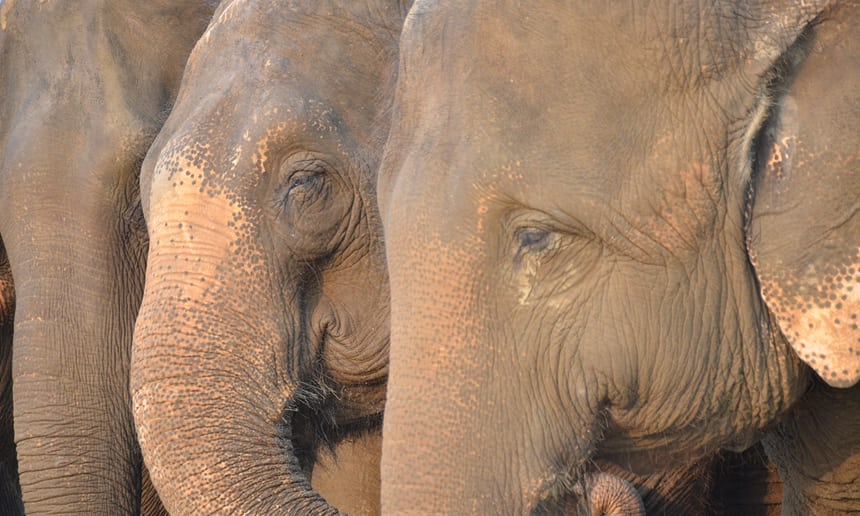I was in Nepal’s Chitwan national park, 160km east of Kathmandu. It’s known for its successful anti-poaching patrols, which have led to an increase in the population of the greater one-horned rhino (bucking the declining trend of other rhino species around the world). But I wasn’t focusing on that; I was here to try a new way of heading out on safari to see them.

For years, by far the most popular safari here was on elephant back – with up to eight people on a single elephant. Given the pain and suffering caused to the animals who are “broken” into submission, it’s not an ideal choice. Indeed, since 2014 more than 100 high-profile operators have stopped selling excursions featuring elephant rides (with Intrepid Travel leading the way) and TripAdvisor stopped promoting them in 2016.
At Tiger Tops Elephant camp, they are developing new, more humane alternative. “After the 2015 earthquake, with visitor numbers down anyway, we decided the time was right for change,” says Tiger Tops’ Marie Jensen.

With the help of Carol Buckley, founder of US-based charity Elephant Aid International, they stopped using chains to restrain the animals and instead let them wander freely in large paddocks. The mahouts are forbidden from using bull hooks and sticks to control them and, rather than ride atop them, travellers now get the chance to live as an honorary member of the herd, feeding and walking alongside them through the jungle and camping next to them overnight. The mahouts still have to ride them, however; they tried walking alongside but the elephants got confused and didn’t know what to do. This was the compromise that had to be made for safety.
“When people go on an elephant-back safari, the animals just become transport,” says Marie. “But when you walk with them, you get to watch how they move, how they feed and how they interact in as natural a way as is possible for a captive elephant.”

Given the country’s long legacy of elephant-back safaris, many mahouts were sceptical about the change. But after a lengthy relearning process – for both them and their animals – it seems they are finally convinced.
“The elephants are happy: they don’t get sores on their backs from carrying the heavy loads. It is a great start and one I hope we’ll see others doing,” says head mahout Kale Kumal, who has been working with elephants since 1988. Tiger Tops is inviting owners of rival lodges to come and see what they’ve achieved, hoping they’ll become a model for others and, eventually, make Nepal a country that bans the practice entirely.
Source: theguardian







Feedback